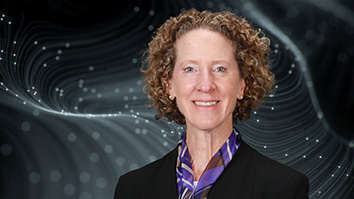
Today’s teachers are using online learning resources and blending digital learning with traditional teacher-led instruction. But it’s challenging to identify high-quality resources and determine how they will work best in classrooms, given particular instructional priorities and the characteristics of the students being served. As a leading digital learning organization in K-12 education, Khan Academy has moved beyond its original focus on individual learners to working closely with schools to transform how education can be organized, delivered, and experienced by students and teachers.
To provide school administrators and teachers with quality information on how Khan Academy—and by inference, other similar digital learning resources—can be used to support math learning in classrooms, the Bill & Melinda Gates Foundation funded SRI International to study the implementation of Khan Academy in a diverse set of schools and classrooms during the 2011-2012 and 2012-2013 school years. The study involved the participation of 20 public, charter, and independent schools; more than 70 teachers; and approximately 2000 students in each study year. By studying the implementation process at these schools, we gained insights into how teachers are using Khan Academy’s resources into their learning environments to enhance student learning. SRI also provided Khan Academy with information to help make its product better and more effective. (Copies of our Implementation Report and accompanying Research Brief are available.)
Overall, we found that teachers are very interested in using digital resources such as Khan Academy, and they see value in the tangible benefits that technology can provide, such as individualized pacing and immediate feedback for students on solutions to problems. In particular, Khan Academy problem sets provided opportunities for students to practice skills taught in recent lessons.
Yet, teachers encountered some challenges, particularly in the early stages of the study. For example, they found that while Khan Academy has a tremendous amount of material on math concepts, initially the content was not organized by grade level or important topic area. It was difficult to identify the problem sets aligned with the teachers’ curriculum.
The research study provided an opportunity for SRI Education to collaborate with Khan Academy and participating teachers to provide valuable feedback for product improvement. Key areas where teachers asked Khan Academy to help them better incorporate digital resources into the classroom included:
- Content aligned with grade level standards and that is easily searchable;
- Student progress reports that are easily interpretable
- A way for teachers to assign content to students within the Khan Academy website
- Models and examples of how other teachers are using digital resources for different purposes and different types of students
Khan Academy was very responsive and made its product more useful and beneficial for students and teachers alike, resulting in a product designed for a very different context than its original intent. Khan Academy filled in content gaps identified by teachers early on and reorganized content so it could be easily searched by topic area, grade level, and course (e.g., Pre-Algebra, Algebra 1, or Geometry). Reporting features have been improved to allow teachers to easily monitor students’ progress towards assigned problem sets, both as a whole class and individually. Additionally, teachers can now recommend content for students to work on within Khan Academy by placing teacher recommendations at the top of the students’ to-do lists.
This is an exciting time for experimentation using digital resources in the classroom, and it is important to note that models and best practices are still emerging and evolving. Teachers are figuring out how best to use this explosion of digital resources, and they will require support in integrating online resources into their curriculum. At the same time, students will require support through this transition to more self-directed learning. This collaborative partnership with Khan Academy has demonstrated the ability for digital learning organizations to iteratively improve digital resources to meet the needs of teachers and students. It has resulted in new understandings about how Khan Academy—as well as other digital learning resources—can be integrated effectively in classroom settings.
This post is also available on the Bill and Melinda Gates Foundation blog, Impatient Optimists.


